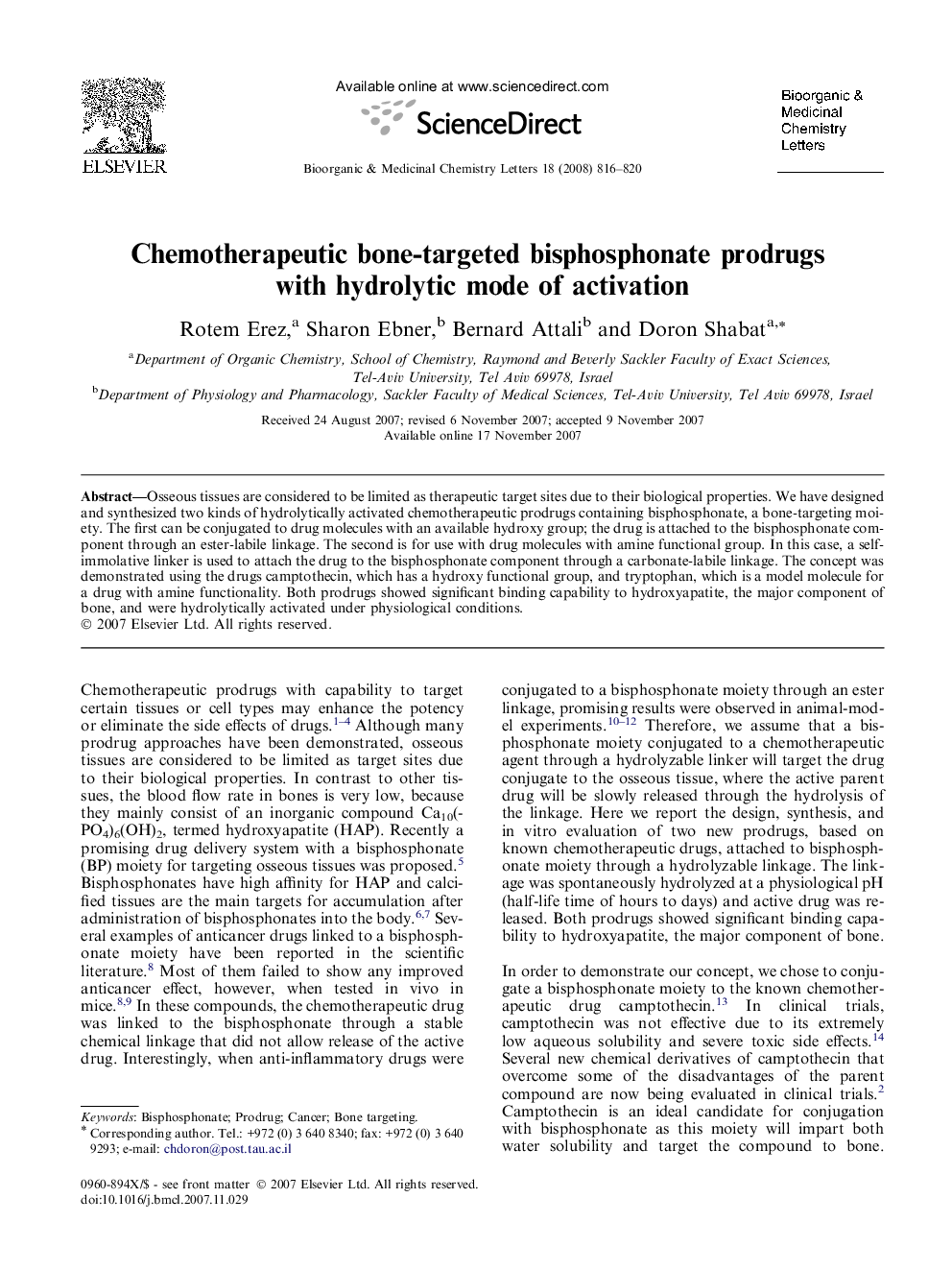| Article ID | Journal | Published Year | Pages | File Type |
|---|---|---|---|---|
| 1365419 | Bioorganic & Medicinal Chemistry Letters | 2008 | 5 Pages |
Osseous tissues are considered to be limited as therapeutic target sites due to their biological properties. We have designed and synthesized two kinds of hydrolytically activated chemotherapeutic prodrugs containing bisphosphonate, a bone-targeting moiety. The first can be conjugated to drug molecules with an available hydroxy group; the drug is attached to the bisphosphonate component through an ester-labile linkage. The second is for use with drug molecules with amine functional group. In this case, a self-immolative linker is used to attach the drug to the bisphosphonate component through a carbonate-labile linkage. The concept was demonstrated using the drugs camptothecin, which has a hydroxy functional group, and tryptophan, which is a model molecule for a drug with amine functionality. Both prodrugs showed significant binding capability to hydroxyapatite, the major component of bone, and were hydrolytically activated under physiological conditions.
Graphical abstractFigure optionsDownload full-size imageDownload as PowerPoint slide
